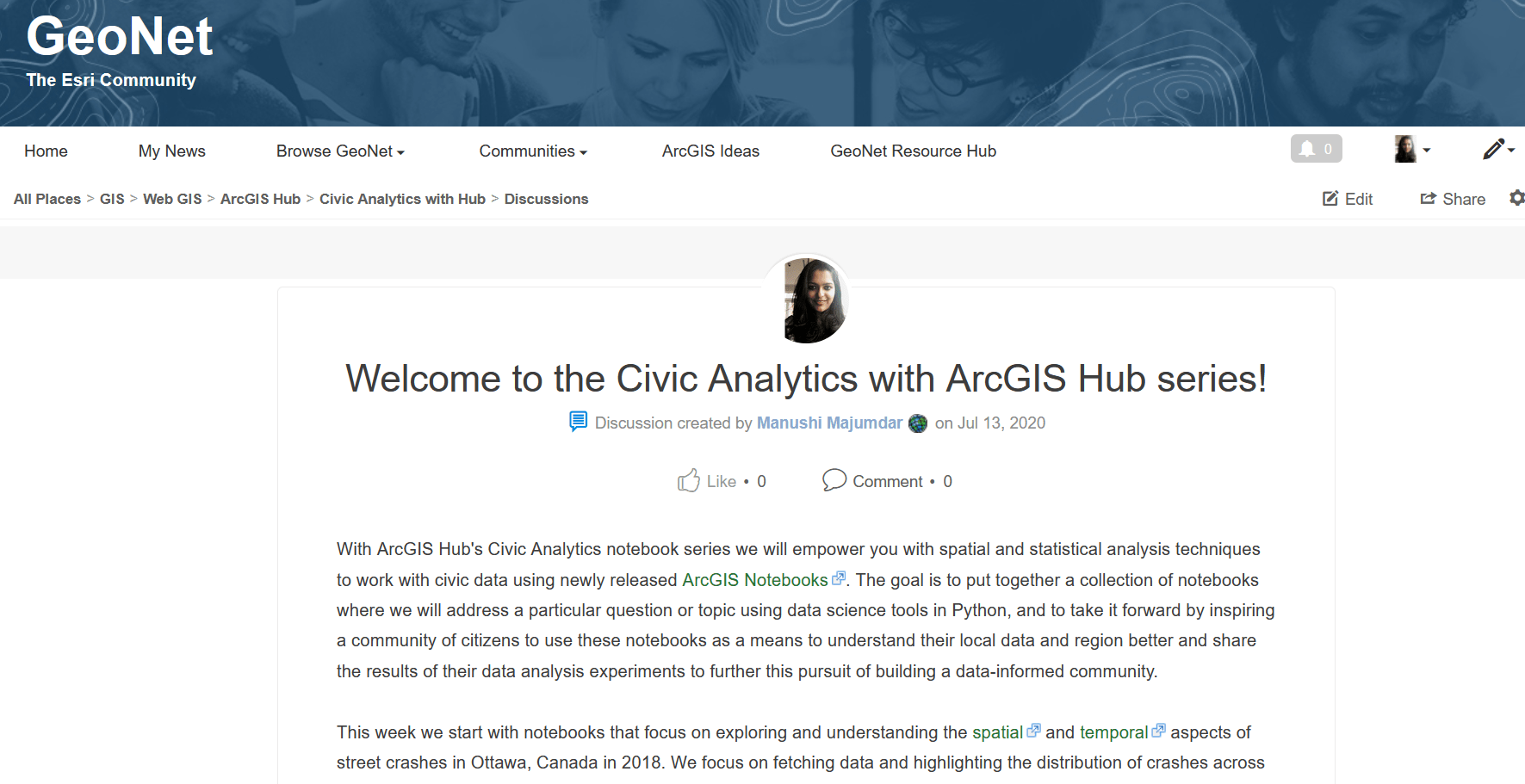Local Governments are increasingly committing to the Open Data goal of making civic data free to reuse and republish. Among its several benefits is a level of transparency and accountability. This encourages citizen participation by giving us an opportunity to understand and improve public service using data. Being informed and proactive about the city or immediate surroundings provides constituents with an awareness of necessary changes. However, we may feel limited in our capacity to advocate for those changes using data-driven measures. On the other hand, often we look at a dataset and have an intuitive sense of some value that could be derived from that data but don’t quite know how to bridge that gap between data and value.
With ArcGIS Hub’s Civic Analytics notebook series we will empower you with spatial and statistical analysis techniques to work with civic data using newly released ArcGIS Notebooks. Simply put, it is a collection of notebooks where we address a particular question or topic using data science tools in Python. The goal is to then take this forward by inspiring a community of citizens to use these notebooks as a means to understand their local data and region better and share results of their data analysis experiments to further this pursuit of building a data-informed community.
How does this work?
Over the next several weeks, we will release new analyses notebooks weekly or biweekly posing a question that introduces a new analysis technique to explore. We will cover a variety of techniques ranging from introductory analysis to cutting-edge spatial analysis as well as advanced predictive analysis with spatial and non-spatial data. We will see how data available publicly can be used to derive meaning with an intent to create awareness and potentially influence change.
This week we start by looking at how spatial and temporal analysis can be done using civic data to gain a better understanding of how the data plays into our world. Click here to learn more.
How can I get in?
Make sure to check this space for links to a new post walking through the new set of notebooks for the week. Feel free to reach out to us with any related interests or questions you have or would like for us to investigate. Once you download and add the notebook to your ArcGIS organization for personal use and get comfortable with its flow and objective, I encourage you to search your local Hub for similar data from your region and try these techniques to observe changes and patterns that emerge specific to your location. Similarly, you may find public notebooks shared by your local government through their Hub, which will give you an idea about the data driven initiatives your city/town is investing in. Applying your skills to your copy of their notebook and contributing to their existing work is a great way to engage and affect public decision making.
For those looking, here is a great interactive Python tutorial and resource for the ArcGIS API for Python. And if you are new to ArcGIS Notebooks and would like to learn how to get started, we have this step-by-step tutorial for you.

I invite you to join our Geonet community for Civic Analytics with Hub where we will also add information about our new notebook offerings for the week. Feel free to ask questions and participate in discussions about these notebooks. Additionally, I welcome you to share your analysis notebooks with us in our Geonet community. You can configure to be informed (RSS feed) of new offerings. Use this community as a platform to share results from your experiments with these notebooks, exchange ideas, start discussions and get in touch with like minded community members to understand and explore civic data to new depths.
I am looking forward to contributing to this space and learning from you as we build together a treasure trove of Civic Analytics solutions to understand and serve our local regions better through a data-driven approach.
Links to the offerings in this series:
- Introduction to spatial and temporal analysis of civic data
- Proximity based spatial analysis of civic data
- Identify relationships and patterns in civic data
- Exploratory text analysis of comments from surveys
- Classifying civic data into binary categories
- Visual representation of temporal, spatial and statistical patterns in civic data
- Data Catalog Analysis
- Extracting data from Twitter using Python

Article Discussion: